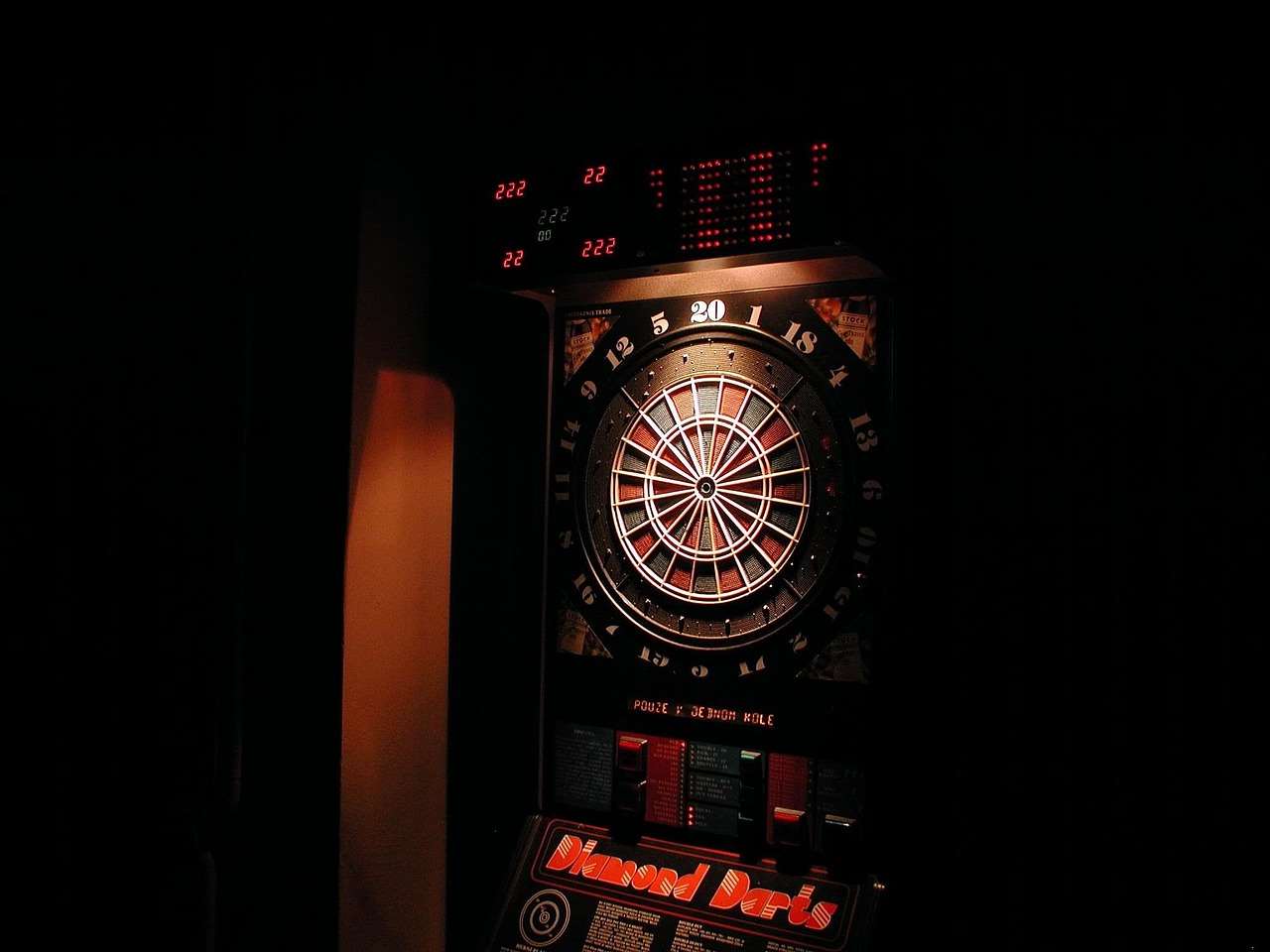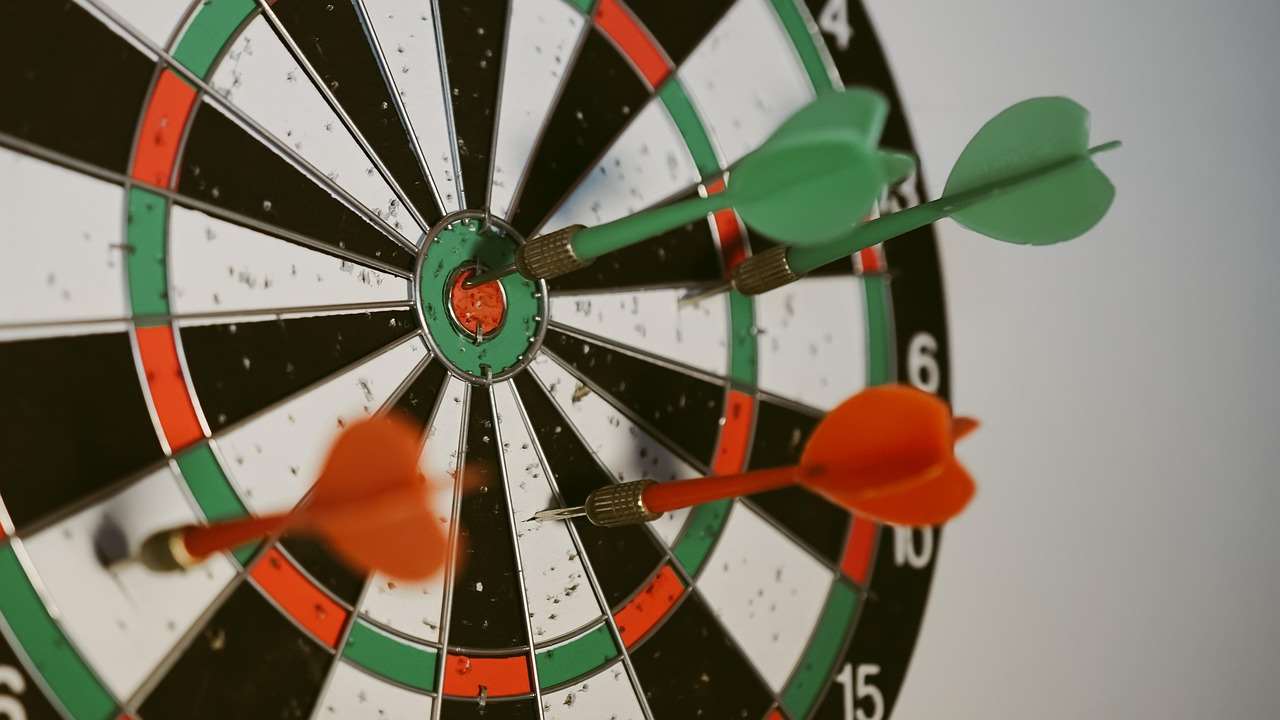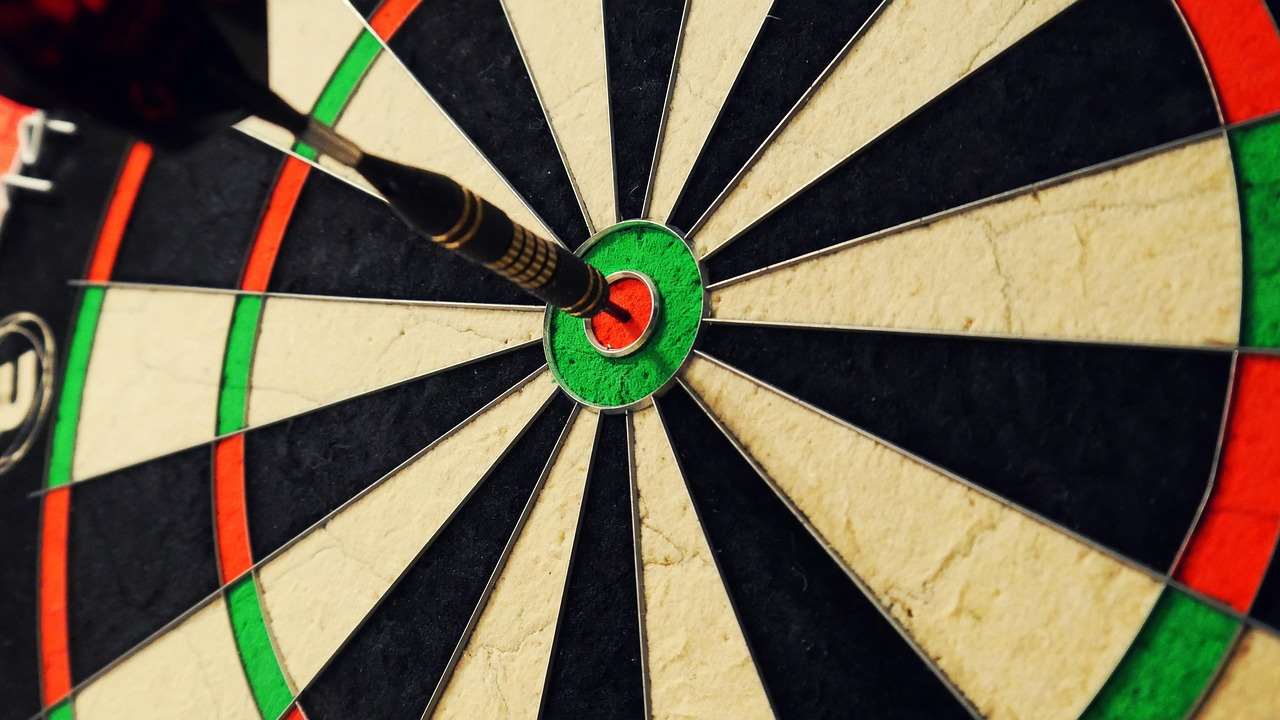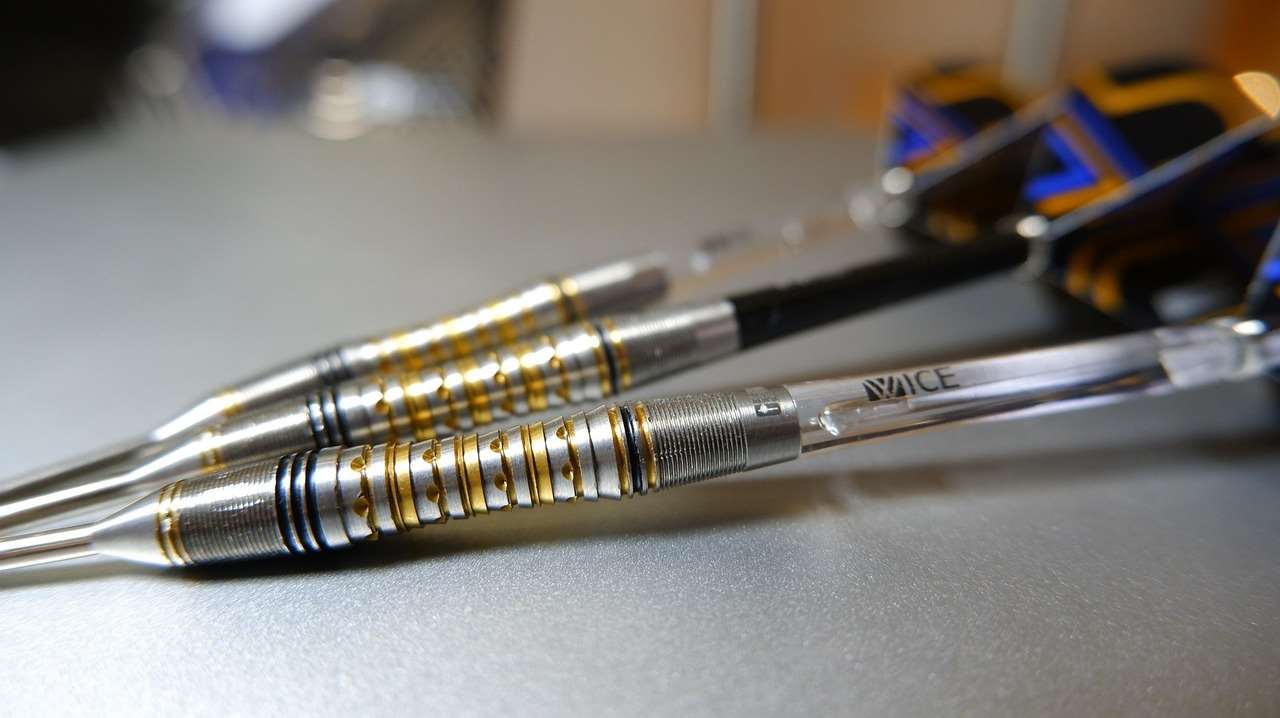The seemingly simple act of throwing a dart is governed by a surprising number of rules, and the evolution of darts foul rules over time reveals a fascinating journey from informal pub games to a globally recognized sport. This article explores how these rules have changed, adapted, and standardized, examining the nuances of **foot faults**, **dart retrieval**, and other regulations that ensure fair play and a consistent competitive environment.
⚠️ Still Using Pen & Paper (or a Chalkboard)?! ⚠️
Step into the future! The Dart Counter App handles all the scoring, suggests checkouts, and tracks your stats automatically. It's easier than you think!
Try the Smart Dart Counter App FREE!Ready for an upgrade? Click above!
Understanding the Earliest Days of Darts and Rule Formation
Darts, in its nascent stages, was far from the regulated sport we know today. Originating in English pubs, the game likely evolved organically, with rules varying from location to location. Early variations often involved different scoring systems and target layouts, reflecting the individual preferences of local communities. There was a distinct lack of uniformity. The rudimentary nature of the game at this time meant that formal “foul” rules were virtually non-existent. The primary focus was simply on having a good time, and any attempts at regulating play would have been largely based on gentlemanly agreements and pub etiquette. These early games lacked standardized **dartboard setup** and clearly defined **throwing distances**, and thus, the concept of a “foul” as we understand it now was largely absent. This period was characterised by localised customs and informal understandings, far removed from the meticulously documented rules that govern professional darts today. Learning the Basic Darts Fundamentals for Beginners can help you appreciate the history!

The Gradual Standardization of Darts Rules
As darts gained popularity, particularly in the early 20th century, the need for standardization became increasingly apparent. This period saw the emergence of regional and national organizations aiming to codify the rules of the game, including establishing rules about what constituted a foul. The formation of bodies like the National Darts Association (NDA) in England marked a significant step towards creating a more consistent and regulated playing environment. These organizations began addressing ambiguities in the rules, clarifying issues such as foot placement at the oche (the throwing line) and the procedure for dealing with darts that bounced out of the board. The gradual process of standardization involved extensive debate and compromise, as different regions and factions sought to reconcile their preferred variations of the game. This process was critical in establishing a foundation for fair competition and the broader acceptance of darts as a legitimate sport.
Foot Faults: A Key Area of Evolution
One of the most frequently debated areas in darts rules has always been foot placement. The **oche**, or throwing line, is paramount, and ensuring players remained behind it was a crucial element of fairness. Early iterations of the rules often lacked clarity on precisely how a player’s foot should be positioned. Should the entire foot be behind the line? Could a player lean forward, as long as their foot remained grounded? The evolution of these rules reflects a gradual refinement of the definition of a “foot fault,” moving towards a more precise and unambiguous interpretation. Modern rules typically stipulate that some part of the player’s foot must remain behind the oche until the dart has been released. This helps prevent players from gaining an unfair advantage by encroaching closer to the dartboard. There are still many players learning adapting darts rules for beginners.
Modern Darts Foul Rules: Precision and Clarity
Today, professional darts is governed by a comprehensive set of rules that leave little room for ambiguity. Organizations such as the Professional Darts Corporation (PDC) and the World Darts Federation (WDF) maintain detailed regulations covering all aspects of the game, including fouls. These rules are meticulously enforced to ensure fair play and maintain the integrity of the competition. Modern rules address various potential infractions, including:
- Foot faults: As mentioned earlier, strict rules govern foot placement at the oche.
- Dart retrieval: Regulations dictate how and when players can retrieve their darts from the board.
- Distractions: Deliberate attempts to distract an opponent are strictly prohibited.
- Conduct: Players are expected to maintain a professional demeanor at all times.
The precision and clarity of modern darts rules reflect the sport’s increasing professionalism and the high stakes involved in major tournaments. The referees and tournament officials have the authority to enforce these rules rigorously, ensuring that all players compete on a level playing field. Understanding the rules well is an important part of learning Simplified 501 game rules for novice players.

The Impact of Technology on Foul Detection
The introduction of technology has further enhanced the enforcement of darts rules. High-speed cameras and sophisticated scoring systems allow officials to detect even the most subtle infractions, such as a marginal foot fault or a dart that lands just outside the scoring area. These technological advancements have reduced the reliance on human judgment, making the game fairer and more transparent. For example, electronic line-calling systems can instantly determine whether a player’s foot has crossed the oche, eliminating any potential for subjective interpretation. Similarly, computerized scoring systems accurately record the position of each dart, preventing scoring errors and ensuring that the correct total is awarded. This increased accuracy has led to greater confidence in the integrity of the game and reduced the potential for disputes among players. Using these rules makes it easier to enjoy Fun dart game variations with modified rules.
Challenges in Maintaining Fair Play
Despite the advancements in technology and the clarity of modern rules, challenges remain in maintaining fair play in darts. The fast-paced nature of the game and the pressure of competition can sometimes lead to unintentional infractions or disputes. For example, a player may inadvertently step over the oche in the heat of the moment, or there may be a disagreement about the exact position of a dart on the board. In these situations, the referee’s judgment is crucial in resolving the issue fairly and efficiently. Moreover, the subjective element of enforcing certain rules, such as those related to player conduct, can also present challenges. Determining whether a player’s behavior constitutes a deliberate attempt to distract an opponent, for instance, may require careful consideration of the context and the player’s intentions. Continuous monitoring and rule clarifications are essential for addressing these challenges and ensuring a level playing field for all competitors.

Examples of Controversial Foul Calls in Darts History
Throughout the history of darts, there have been several instances of controversial foul calls that have sparked debate and discussion. These incidents highlight the importance of clear and unambiguous rules, as well as the need for consistent enforcement. One example might involve a disputed foot fault in a high-stakes match, where the player claimed they did not intentionally cross the oche. Another might involve a disagreement over the scoring of a dart that landed close to the wire, with the players and officials offering conflicting opinions. These controversial calls often generate considerable media attention and fan interest, underscoring the passion and intensity surrounding the sport of darts. They also serve as a reminder that even with the most comprehensive rules, there is always the potential for human error and subjective interpretation. Examining past controversies is a good way to learn How to make darts fairer with handicap rules.
The Future of Darts Foul Rules: Continued Refinement
The evolution of darts foul rules over time is an ongoing process. As the sport continues to grow and evolve, it is likely that the rules will be further refined and adapted to address new challenges and ensure fair play. Areas that may see further development include the use of technology to enhance foul detection, the clarification of rules related to player conduct, and the standardization of regulations across different darts organizations. Additionally, there may be efforts to simplify the rules and make them more accessible to amateur players and beginners. The goal is to create a set of rules that are both comprehensive and easy to understand, promoting fair competition and fostering a positive experience for all participants. Further, adapting these rules for different groups like Adapting dart game rules for children can make the sport more inclusive. The rules of conduct for spectators may also be further developed to reduce the chance of distraction for players.

The Importance of Understanding Darts Foul Rules
Whether you’re a seasoned professional or a casual pub player, understanding the rules of darts, including those pertaining to fouls, is essential for enjoying the game and competing fairly. Knowing the regulations regarding foot placement, dart retrieval, and player conduct will help you avoid unintentional infractions and ensure that you are playing by the rules. Additionally, a thorough understanding of the rules will enable you to challenge unfair calls and advocate for your rights as a player. By familiarizing yourself with the nuances of darts regulations, you can enhance your enjoyment of the game and contribute to a more positive and competitive environment. Furthermore, understanding the **official dart regulations** helps promote respect for the sport and its traditions.

Tips for Avoiding Common Darts Fouls
Here are a few practical tips to help you avoid common darts fouls:
- Pay attention to your foot placement: Always ensure that some part of your foot remains behind the oche until the dart has been released.
- Retrieve your darts promptly and safely: Follow the established procedure for retrieving your darts from the board, avoiding any unnecessary delays or distractions.
- Maintain a respectful demeanor: Refrain from any behavior that could be construed as unsportsmanlike or disruptive.
- Familiarize yourself with the specific rules of the tournament or league: Be aware of any variations in the rules that may apply to your particular competition.
By following these simple guidelines, you can minimize the risk of committing a foul and ensure that you are playing darts fairly and responsibly.
Conclusion: The Ongoing Significance of Darts Rules
The evolution of darts foul rules over time has been a long and winding road, reflecting the growth and maturation of the sport. From the informal customs of early pub games to the meticulously documented regulations of modern professional darts, the rules have evolved to ensure fair play, maintain the integrity of the competition, and enhance the overall experience for players and fans alike. Understanding these rules is crucial for anyone who wants to participate in the game, whether as a casual player or a serious competitor. As darts continues to evolve, it is likely that the rules will continue to be refined and adapted to meet the challenges of a dynamic and ever-changing sport. Stay informed about any rule changes and keep practicing to improve your game. Now that you know more about the rules, why not try one of the creative dart rules for parties and social gatherings to spice things up?
Hi, I’m Dieter, and I created Dartcounter (Dartcounterapp.com). My motivation wasn’t being a darts expert – quite the opposite! When I first started playing, I loved the game but found keeping accurate scores and tracking stats difficult and distracting.
I figured I couldn’t be the only one struggling with this. So, I decided to build a solution: an easy-to-use application that everyone, no matter their experience level, could use to manage scoring effortlessly.
My goal for Dartcounter was simple: let the app handle the numbers – the scoring, the averages, the stats, even checkout suggestions – so players could focus purely on their throw and enjoying the game. It began as a way to solve my own beginner’s problem, and I’m thrilled it has grown into a helpful tool for the wider darts community.